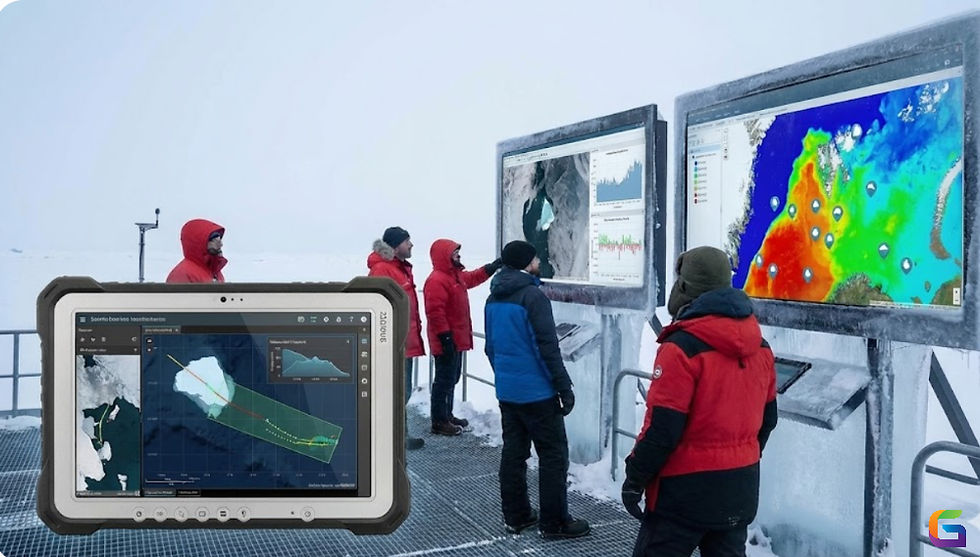Understanding Apache Sedona: The Open-Source Geospatial Framework
- Anvita Shrivastava

- Jun 16, 2025
- 3 min read
In today's landscape of big data and geospatial analytics, the demand for efficient processing, analysis, and visualization of large-scale spatial data has never been more crucial. Enter Apache Sedona, an open-source, distributed geospatial data processing engine that integrates seamlessly with Apache Spark. This blog examines Apache Sedona's architecture and capabilities, highlighting how it facilitates scalable geospatial analytics.
What Is Apache Sedona?
An Apache top-level project called Apache Sedona (previously GeoSpark) adds geographical data types, indexes, and operations to Apache Spark. It is designed for large-scale geospatial computing, making it simple for developers and analysts to perform distributed geospatial analysis and spatial SQL queries.
Strong and effective geographic data pipelines are made possible by Sedona's compatibility with key data storage systems and support for common spatial formats.

Key Features of Apache Sedona
1. Native Spatial Data Types
Sedona introduces custom spatial types into Spark:
Geometry: Base type for all spatial objects.
Point, Polygon, LineString, MultiPolygon, etc., built upon JTS (Java Topology Suite).
These types are fully compatible with Spark SQL and DataFrame APIs.
2. Spatial SQL and Functions
Sedona provides a rich suite of spatial SQL functions, similar to PostGIS:
ST_Contains(), ST_Intersects(), ST_Within(), ST_Distance()
ST_GeomFromWKT(), ST_AsText(), ST_Transform()
You can write spatial SQL queries using Spark. SQL () just as you would with standard SQL.
3. Indexing by Space
Distributed geographic indexing is supported by Sedona to expedite range queries and spatial joins:
The quad-tree index
The R-Tree Index
The performance of spatial operations in a distributed setting is greatly enhanced by indexing.
4. Support for Formats
Apache Sedona facilitates the writing and reading of:
GeoJSON
Shape files
WKB/WKT
Spatial types in a parquet
Coordinated CSV
As a result, existing GIS tools and datasets can be seamlessly integrated.
5. Integration with Spark Ecosystem
Sedona's native partners include:
SQL and Apache Spark DataFrames
The Apache Hive
Zeppelin/Jupyter Notebooks for Apache
MLlib, for workflows including spatial machine learning
Through Spark Structured Streaming, it facilitates both batch and streaming spatial analytics.
Apache Sedona Architecture
1. The Core Layer
Uses JTS to implement spatial operations and geometry objects. The GEOS library found in various geospatial engines is comparable to this layer.
2. Layer of Adapters
Manages the input of data in several formats and transforms it into DataFrames and Sedona spatial RDDs.
3. Spark SQL integration
Provided by the SQL Layer. To facilitate spatial operations directly within SQL, Sedona registers UDTs (User-Defined Types) and UDFs (User-Defined Functions).
4. Indexing and Partitioning
Sedona optimizes spatial joins and proximity searches by partitioning spatial data according to a geographic range or a Hilbert curve. For quick in-memory operations, indexes are constructed on each partition.
Installing and Using Apache Sedona
To get started, use Sedona with Spark in Scala, Python, or Java. Here's an example for PySpark:
From Sedona. Register import SedonaRegistrator
from sedona. Utils import SedonaKryoRegistrator, KryoSerializer.
conf = SparkConf().setAppName("SedonaApp")
conf.set("spark.serializer", KryoSerializer.getName)
conf.set("spark.kryo.registrator", SedonaKryoRegistrator.getName)
spark = SparkSession.builder.config(conf=conf).getOrCreate()
SedonaRegistrator.registerAll(spark)
Load and run spatial queries:
spatial_df = spark.read.format("csv").option("header", "true").load("locations.csv")
spatial_df.createOrReplaceTempView("places")
result = spark.sql("""
SELECT name FROM places
WHERE ST_Contains(ST_GeomFromText('POLYGON((...))'), ST_Point(c_long, c_lat))
""")
Apache Sedona, a robust, open-source, distributed substitute for outdated GIS systems, is transforming geographic big data processing. Sedona offers the performance and scalability required for spatial analytics at scale, regardless of your field—smart cities, environmental monitoring, or location intelligence.
For more information or any questions regarding Apache Sedona, please don't hesitate to contact us at
Email: info@geowgs84.com
USA (HQ): (720) 702–4849
(A GeoWGS84 Corp Company)




Comments